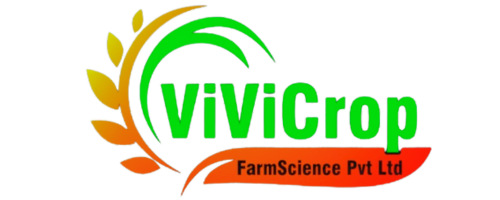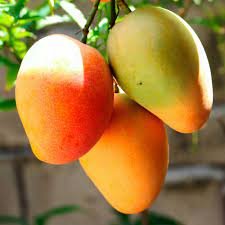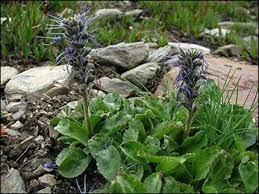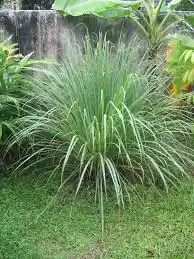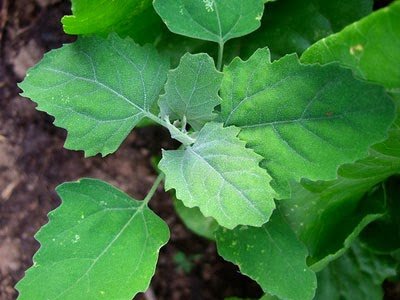Vasaka (Adhatoda vasica) Nutrition Requirements
Nutrition required by Vasaka (Adhatoda vasica) at each stage of its life cycle.
SOIL PREPARATION
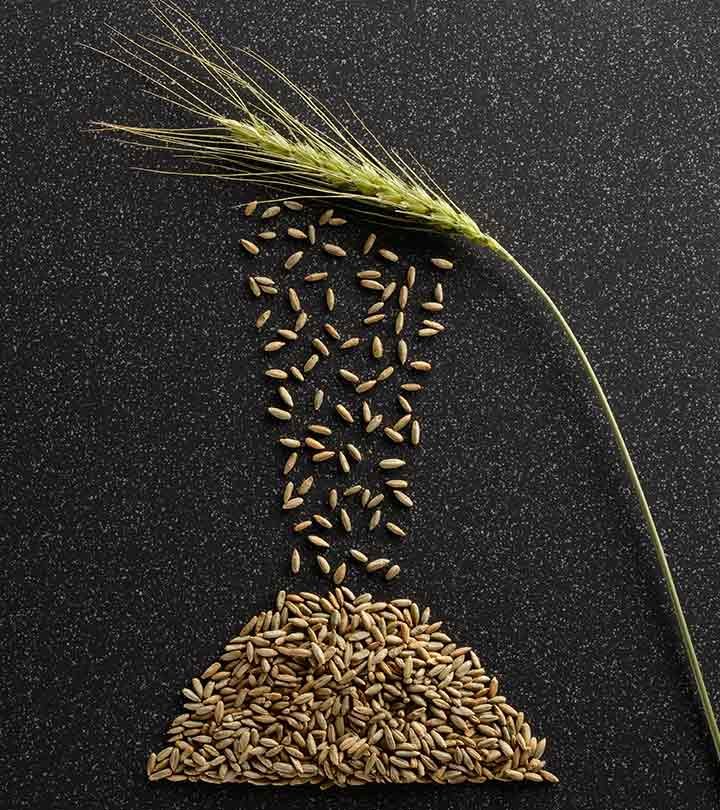
Soil Preparation
Soil preparation is a crucial step in cultivating Vasaka (Adhatoda vasica), also known as Malabar nut or Adulsa.
Here's a guide to soil preparation methods and the plant's nutrition requirements during this stage:
### Soil Preparation Method:
1. **Site Selection:**
- Choose a well-drained site with loamy or sandy soil that receives partial sunlight to full sunlight.
- Ensure the site is free from waterlogging and has good air circulation.
2. **Soil Testing:**
- Conduct a soil test to determine the pH and nutrient levels of the soil.
- Adjust soil pH to the optimal range of 6.5 to 7.5 using agricultural lime or sulfur if necessary.
3. **Soil Tilling:**
- Use a plow or tiller to break the soil to a depth of about 8 to 10 inches.
- Remove any rocks, debris, or weeds from the soil surface.
4. **Soil Amendment:**
- Incorporate organic matter such as well-rotted compost or aged manure into the soil to improve its structure, fertility, and moisture retention.
- Add organic mulch to the soil surface to suppress weed growth and conserve soil moisture.
5. **Bed Preparation:**
- Create raised beds or ridges to improve drainage and prevent waterlogging, especially in heavy clay soils.
- Ensure proper spacing between beds for easy access and maintenance.
6. **Final Bed Preparation:**
- Use a rake or hoe to level the soil surface and create smooth, uniform beds for planting.
- Compact the soil gently to ensure good seed-to-soil contact.
### Nutrition Requirement at Soil Preparation Stage:
1. **Organic Matter:**
- Incorporate well-rotted compost or aged manure into the soil to provide organic matter and essential nutrients for plant growth.
- Organic matter improves soil structure, fertility, and moisture retention.
2. **Microbial Inoculants:**
- Apply microbial inoculants containing beneficial microorganisms such as mycorrhizae and rhizobia to enhance nutrient uptake and improve soil health.
3. **Balanced Fertilization:**
- Based on soil test results, apply balanced fertilizers containing nitrogen (N), phosphorus (P), potassium (K), and micronutrients to meet the plant's nutritional requirements.
- Use organic fertilizers such as composted poultry manure or bone meal for slow-release nutrients.
4. **pH Adjustment:**
- Adjust soil pH to the optimal range of 6.5 to 7.5 using agricultural lime or sulfur if necessary.
- Proper pH ensures optimal nutrient availability for plant growth.
5. **Mulching:**
- Apply organic mulch such as straw, grass clippings, or shredded leaves to the soil surface to conserve moisture, suppress weed growth, and gradually release nutrients as it decomposes.
6. **Water Management:**
- Ensure proper drainage to prevent waterlogging, which can lead to root rot and nutrient leaching.
- Provide supplemental irrigation as needed to maintain consistent soil moisture levels for seed germination and early plant growth.
By following these soil preparation methods and addressing the plant's nutrition requirements, you can create an optimal growing environment for Vasaka (Adhatoda vasica) and promote healthy plant growth from the soil preparation stage.
Early Growth (Germination to Establishment)

Early Growth
During the early growth stage (germination to establishment) of Vasaka (Adhatoda vasica), proper nutrition is essential to support healthy seedling development and establishment.
Here are the key nutrition requirements during this stage:
1. **Nitrogen (N):**
- Nitrogen is crucial for promoting vigorous vegetative growth and green leaf development during the early stages.
- Apply nitrogen-rich fertilizers such as urea or ammonium sulfate to meet the plant's initial nitrogen requirements.
- Ensure proper nitrogen availability to support robust shoot and root growth.
2. **Phosphorus (P):**
- Phosphorus is essential for root development, energy transfer, and overall plant growth.
- Provide phosphorus-rich fertilizers such as superphosphate or rock phosphate to promote healthy root system development.
- Adequate phosphorus encourages strong root establishment and enhances nutrient uptake efficiency.
3. **Potassium (K):**
- Potassium plays a vital role in overall plant health, including water regulation, disease resistance, and photosynthesis.
- Apply potassium-rich fertilizers such as potassium sulfate or potassium chloride to support early growth and stress tolerance.
- Adequate potassium levels promote sturdy stem growth and improve plant vigor.
4. **Micronutrients:**
- Micronutrients such as iron (Fe), manganese (Mn), zinc (Zn), copper (Cu), and boron (B) are essential for various physiological processes in plants.
- Ensure the availability of micronutrients through soil amendments or foliar application to prevent deficiencies and support optimal growth.
- Monitor plant health and address any visible symptoms of micronutrient deficiencies promptly.
5. **Calcium (Ca) and Magnesium (Mg):**
- Calcium and magnesium are essential secondary nutrients that contribute to cell wall structure, enzyme activation, and nutrient uptake.
- Maintain adequate calcium and magnesium levels in the soil through proper fertilization or soil amendments to support early growth and development.
- Calcium helps in cell division and strengthens plant cell walls, while magnesium is crucial for chlorophyll formation and photosynthesis.
6. **pH Management:**
- Ensure the soil pH is within the optimal range of 6.0 to 7.5 for Vasaka plants during the early growth stage.
- Adjust soil pH if necessary using agricultural lime or sulfur to optimize nutrient availability and uptake.
- Proper pH management ensures efficient nutrient absorption and supports healthy seedling establishment.
7. **Water Management:**
- Maintain adequate soil moisture levels to support seed germination, root development, and early growth.
- Provide regular irrigation as needed, ensuring consistent soil moisture without waterlogging or drought stress.
- Proper water management is essential for nutrient uptake and overall plant health during the early growth stage.
By addressing these nutrition requirements during the early growth stage, you can promote healthy seedling establishment and support robust growth in Vasaka (Adhatoda vasica) plants. Regular monitoring of plant health and nutrient levels is essential for optimizing growth and maximizing yield potential.
Tillering Stage (Shoot Development)

Tillering Stage
During the tillering stage (shoot development) of Vasaka (Adhatoda vasica), the plant's nutritional requirements change to support vigorous shoot growth and development.
Here are the key nutrition requirements during this stage:
1. **Nitrogen (N):**
- Nitrogen continues to be essential during the tillering stage to support the development of healthy shoots and foliage.
- Apply nitrogen-rich fertilizers such as urea or ammonium sulfate to promote robust vegetative growth and lush foliage.
- Ensure balanced nitrogen availability to support optimal shoot elongation and tiller formation.
2. **Phosphorus (P):**
- Phosphorus remains crucial during the tillering stage to support root development and overall plant vigor.
- Provide phosphorus-rich fertilizers such as superphosphate to enhance root growth and nutrient uptake efficiency.
- Adequate phosphorus levels promote strong tiller formation and support the development of a healthy root system.
3. **Potassium (K):**
- Potassium plays a vital role in shoot development, stress tolerance, and disease resistance during the tillering stage.
- Apply potassium-rich fertilizers such as potassium sulfate or potassium chloride to support shoot elongation and strengthen cell walls.
- Adequate potassium levels contribute to sturdy shoot growth and enhance plant resilience to environmental stresses.
4. **Micronutrients:**
- Micronutrients such as iron (Fe), manganese (Mn), zinc (Zn), copper (Cu), and boron (B) are essential for various metabolic processes during shoot development.
- Ensure the availability of micronutrients through soil amendments or foliar application to prevent deficiencies and support optimal shoot growth.
- Monitor plant health and address any visible symptoms of micronutrient deficiencies promptly to avoid growth limitations.
5. **Calcium (Ca) and Magnesium (Mg):**
- Calcium and magnesium contribute to cell wall formation, enzyme activation, and nutrient transport during shoot development.
- Maintain adequate calcium and magnesium levels in the soil through proper fertilization or soil amendments to support shoot elongation and structural integrity.
- Calcium helps in cell elongation and strengthens cell walls, while magnesium is essential for chlorophyll synthesis and photosynthesis.
6. **pH Management:**
- Ensure the soil pH remains within the optimal range of 6.0 to 7.5 during the tillering stage to facilitate nutrient uptake and shoot growth.
- Adjust soil pH if necessary using agricultural lime or sulfur to optimize nutrient availability and support healthy shoot development.
- Proper pH management promotes efficient nutrient absorption and contributes to robust shoot growth and tillering.
7. **Water Management:**
- Maintain consistent soil moisture levels during the tillering stage to support vigorous shoot growth and tiller formation.
- Provide regular irrigation as needed, ensuring adequate soil moisture without waterlogging or drought stress.
- Proper water management is essential for nutrient uptake and overall plant health during shoot development.
By addressing these nutrition requirements during the tillering stage, you can promote healthy shoot development and support optimal growth in Vasaka (Adhatoda vasica) plants. Regular monitoring of plant health and nutrient levels is crucial for maximizing yield potential and ensuring the success of the crop.
Flowering

Flowering
During the flowering stage of Vasaka (Adhatoda vasica), the plant's nutritional requirements change to support flower initiation, development, and pollination.
Here are the key nutrition requirements during this stage:
1. **Phosphorus (P):**
- Phosphorus is crucial for promoting flower formation and development.
- Apply phosphorus-rich fertilizers such as superphosphate to support robust flowering.
- Adequate phosphorus levels enhance flower bud initiation and development, leading to increased flower production.
2. **Potassium (K):**
- Potassium plays a vital role in flower quality, color, and overall reproductive development.
- Provide potassium-rich fertilizers such as potassium sulfate or potassium chloride to support healthy flower formation and development.
- Adequate potassium levels improve flower size, color intensity, and pollen viability, enhancing the overall flowering process.
3. **Calcium (Ca) and Magnesium (Mg):**
- Calcium and magnesium contribute to flower structure, cell division, and pollen tube development.
- Maintain adequate calcium and magnesium levels in the soil through proper fertilization or soil amendments to support flower development and quality.
- Calcium helps in flower cell elongation and strengthens cell walls, while magnesium is essential for chlorophyll synthesis and pollen tube growth.
4. **Nitrogen (N):**
- While nitrogen is essential for vegetative growth, excessive nitrogen during the flowering stage can lead to excessive vegetative growth at the expense of flower production.
- Apply nitrogen-containing fertilizers sparingly to avoid nitrogen excess and prioritize phosphorus and potassium fertilization for optimal flower development.
5. **Micronutrients:**
- Micronutrients such as boron (B), zinc (Zn), and manganese (Mn) play critical roles in flower formation, pollination, and seed set.
- Ensure the availability of micronutrients through soil amendments or foliar application to support healthy flower development and reproductive processes.
- Monitor plant health and address any visible symptoms of micronutrient deficiencies promptly to ensure optimal flowering and seed production.
6. **pH Management:**
- Maintain the soil pH within the optimal range of 6.0 to 7.5 during the flowering stage to facilitate nutrient uptake and flower development.
- Adjust soil pH if necessary using agricultural lime or sulfur to optimize nutrient availability and support healthy flower formation.
- Proper pH management promotes efficient nutrient absorption and contributes to robust flower development and pollination.
7. **Water Management:**
- Maintain consistent soil moisture levels during the flowering stage to support optimal flower development and pollination.
- Provide regular irrigation as needed, ensuring adequate soil moisture without waterlogging or drought stress.
- Proper water management is crucial for promoting flower formation, pollination success, and seed set.
By addressing these nutrition requirements during the flowering stage, you can promote healthy flower development, pollination, and seed set in Vasaka (Adhatoda vasica) plants. Regular monitoring of plant health and nutrient levels is essential for maximizing flowering potential and ensuring successful seed production.
Matchuration & Ripening

Matchuration & Ripening
During the maturation and ripening stage of Vasaka (Adhatoda vasica), the plant's nutritional requirements shift to support seed development, maturation, and ripening.
Here are the key nutrition requirements during this stage:
1. **Potassium (K):**
- Potassium is essential for seed maturation and quality during the ripening stage.
- Apply potassium-rich fertilizers such as potassium sulfate or potassium chloride to support seed filling and maturation.
- Adequate potassium levels enhance seed vigor, size, and quality, contributing to overall seed yield and viability.
2. **Phosphorus (P):**
- Phosphorus continues to be important during the ripening stage to support seed development and maturation.
- Provide phosphorus-rich fertilizers such as superphosphate to ensure optimal seed filling and ripening.
- Adequate phosphorus levels promote seed maturation, leading to increased seed weight and quality.
3. **Calcium (Ca) and Magnesium (Mg):**
- Calcium and magnesium contribute to seed development, cell wall formation, and overall seed quality during the ripening stage.
- Maintain adequate calcium and magnesium levels in the soil through proper fertilization or soil amendments to support seed maturation and quality.
- Calcium helps in seed coat formation and strengthens seed structure, while magnesium is essential for chlorophyll synthesis and seed development.
4. **Micronutrients:**
- Micronutrients such as boron (B), zinc (Zn), and manganese (Mn) play critical roles in seed development, maturation, and quality.
- Ensure the availability of micronutrients through soil amendments or foliar application to support healthy seed maturation and quality.
- Monitor plant health and address any visible symptoms of micronutrient deficiencies promptly to ensure optimal seed development and ripening.
5. **Nitrogen (N):**
- While nitrogen is important for vegetative growth, excessive nitrogen during the ripening stage can delay seed maturation and reduce seed quality.
- Apply nitrogen-containing fertilizers sparingly to avoid nitrogen excess and prioritize potassium and phosphorus fertilization for optimal seed development and ripening.
6. **Water Management:**
- Maintain consistent soil moisture levels during the ripening stage to support optimal seed filling and maturation.
- Provide regular irrigation as needed, ensuring adequate soil moisture without waterlogging or drought stress.
- Proper water management is crucial for promoting seed development, maturation, and quality during the ripening stage.
By addressing these nutrition requirements during the maturation and ripening stage, you can promote healthy seed development, maturation, and quality in Vasaka (Adhatoda vasica) plants. Regular monitoring of plant health and nutrient levels is essential for maximizing seed yield and quality.
Harvesting

Harvesting
During the harvesting stage of Vasaka (Adhatoda vasica), proper nutrition management and specific procedures are essential to ensure optimal yield and quality of harvested plant material.
Here are the key nutrition requirements and procedures to follow during the harvesting stage:
1. **Nutrition Requirements:**
- During the harvesting stage, the plant's focus shifts from active growth and development to the accumulation of secondary metabolites and active compounds that contribute to its medicinal properties.
- While nutrient uptake may decrease during this stage, it's important to maintain balanced soil fertility to support the plant's health and vitality.
2. **Potassium (K) Management:**
- Potassium plays a crucial role in the synthesis and accumulation of bioactive compounds in Vasaka.
- Ensure adequate potassium availability in the soil to support the plant's metabolic processes during the final stages of growth and maturation.
3. **Calcium (Ca) and Magnesium (Mg) Management:**
- Calcium and magnesium contribute to overall plant health and play roles in enzymatic processes and secondary metabolite synthesis.
- Maintain balanced levels of calcium and magnesium to support the plant's physiological functions during the harvesting stage.
4. **Water Management:**
- Proper water management is essential during the harvesting stage to ensure the plant's hydration and prevent water stress.
- Adequate soil moisture levels should be maintained to support the plant's metabolic activities and facilitate the harvesting process.
5. **Procedure for Harvesting:**
- Harvesting of Vasaka typically involves the collection of mature leaves and sometimes stems, depending on the specific parts used for medicinal purposes.
- Harvesting is usually performed manually by handpicking mature leaves or using sharp tools to cut stems.
- It's important to harvest Vasaka plants at the right time to ensure maximum potency of bioactive compounds. Generally, the optimal time for harvesting is when the plants are in full bloom or when the leaves are fully developed.
- Avoid overharvesting or damaging the plants during the harvesting process to ensure regrowth and sustainability.
6. **Post-Harvest Handling:**
- After harvesting, it's essential to handle the plant material carefully to preserve its quality and medicinal properties.
- Clean the harvested material to remove any debris or contaminants.
- Depending on the intended use, the harvested material may be dried immediately or processed further for extraction of bioactive compounds.
- Proper drying techniques should be employed to prevent mold growth and ensure the retention of active compounds.
7. **Soil Management for Regrowth:**
- After harvesting, it's important to replenish the soil with organic matter and nutrients to support regrowth and maintain soil fertility for future crops.
By following these nutrition requirements and procedures during the harvesting stage, you can ensure the optimal yield, quality, and sustainability of Vasaka (Adhatoda vasica) plants for medicinal use. Regular monitoring of plant health and soil fertility is crucial for successful harvesting and long-term cultivation.
Vasaka (Adhatoda vasica) Farming Economics
Get details of Profitability and cost estimate in growing Vasaka (Adhatoda vasica) per acres of Land.
SOIL PREPARATION
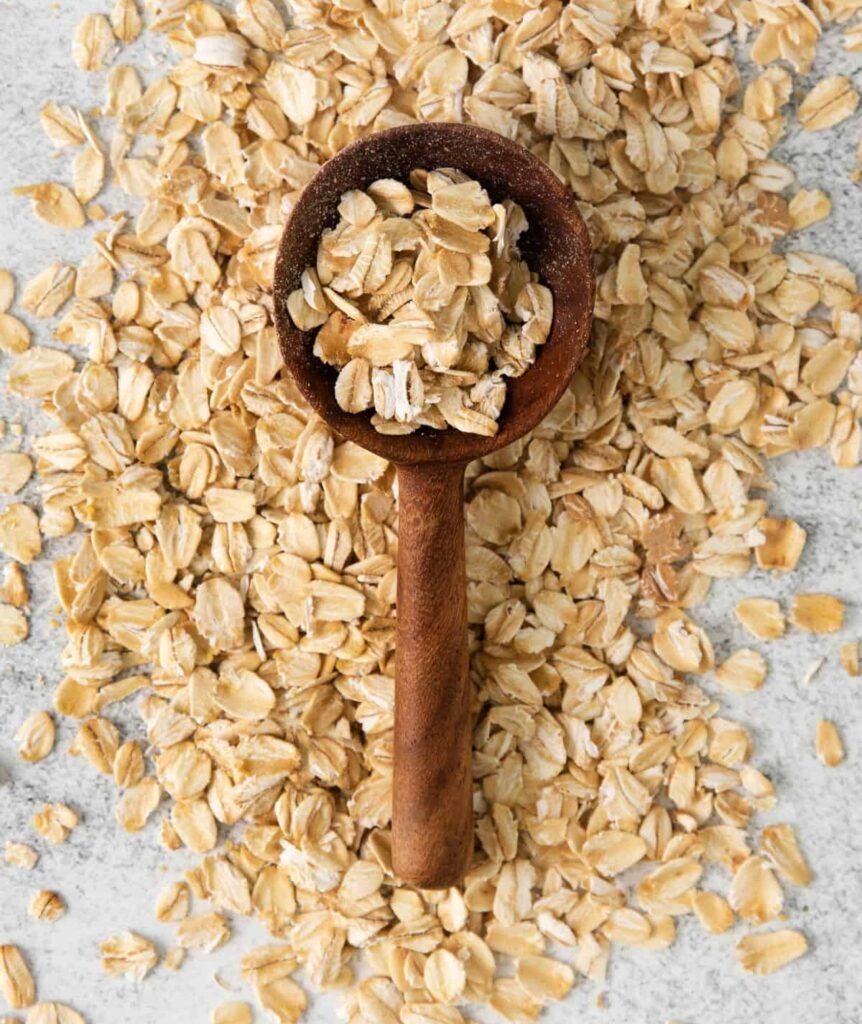
Soil Preparation
Early Growth (Germination to Establishment)

Early Growth
Tillering Stage (Shoot Development)

Tillering Stage
Flowering

Flowering
Matchuration & Ripening

Matchuration & Ripening
Harvesting

Harvesting
Vasaka (Adhatoda vasica) Disease Details
Nutrition required by Vasaka (Adhatoda vasica) at each stage of its life cycle.
SOIL PREPARATION

Soil Preparation
At the soil preparation stage for Vasaka (Adhatoda vasica) cultivation, several diseases and pests can affect the plants if proper precautions are not taken.
Here are some potential diseases and pests and the precautions to prevent them:
1. **Damping-off:**
- Damping-off is a common fungal disease that affects seedlings during germination and early growth stages.
- Precautions:
- Use disease-free seeds or seedlings from reputable sources.
- Ensure proper drainage to avoid waterlogging, which promotes fungal growth.
- Treat seeds with fungicides before sowing to control fungal pathogens.
2. **Root Rot:**
- Root rot is caused by fungal pathogens and can lead to the decay of the plant's root system, affecting growth and development.
- Precautions:
- Ensure well-drained soil to prevent water stagnation.
- Avoid overwatering and maintain appropriate soil moisture levels.
- Use disease-resistant varieties if available.
3. **Soilborne Pathogens:**
- Various soilborne pathogens such as Fusarium, Phytophthora, and Rhizoctonia can infect Vasaka plants, causing diseases like wilt and root diseases.
- Precautions:
- Practice crop rotation to reduce the buildup of soilborne pathogens.
- Use sterilized soil or soilless growing media for seedling propagation.
- Apply biocontrol agents or organic amendments to suppress soilborne pathogens.
4. **Nematodes:**
- Nematodes are microscopic roundworms that can infest the soil and attack the roots, leading to stunted growth and reduced yield.
- Precautions:
- Rotate crops with non-host plants to reduce nematode populations.
- Use nematode-resistant varieties if available.
- Apply organic soil amendments such as neem cake to suppress nematode populations.
5. **Weeds:**
- Weeds compete with Vasaka plants for nutrients, water, and light, affecting growth and yield.
- Precautions:
- Practice proper weed management techniques such as hand weeding, mulching, or using herbicides (if necessary) to control weed growth.
- Maintain clean cultivation practices to reduce weed pressure.
6. **Pests:**
- Various pests such as aphids, whiteflies, and caterpillars can infest Vasaka plants, causing damage to leaves and affecting plant health.
- Precautions:
- Monitor plants regularly for signs of pest infestation.
- Use insecticidal soap, neem oil, or botanical insecticides to control pests.
- Introduce beneficial insects or predators for biological pest control.
7. **Soil Sterilization:**
- Soil sterilization using solarization or steam sterilization methods can help eliminate soilborne pathogens, weed seeds, and pests.
- Precautions:
- Follow appropriate soil sterilization methods based on local recommendations and guidelines.
- Avoid excessive soil sterilization, which may harm beneficial microorganisms.
By implementing these precautions and management practices during the soil preparation stage, you can minimize the risk of diseases and pests affecting Vasaka (Adhatoda vasica) plants and promote healthy growth and development.
Early Growth (Germination to Establishment)

Early Growth
During the early growth stage (germination to establishment) of Vasaka (Adhatoda vasica), several diseases and pests can affect the plants if proper precautions are not taken.
Here are some potential diseases and pests and the precautions to prevent them:
1. **Damping-off:**
- Damping-off is a fungal disease that affects seedlings during germination and early growth stages, causing them to rot and collapse.
- Precautions:
- Use disease-free seeds or seedlings from reputable sources.
- Ensure proper ventilation and avoid overwatering to reduce humidity levels.
- Treat seeds with fungicides before sowing to control fungal pathogens.
2. **Leaf Spot:**
- Leaf spot diseases, caused by various fungal pathogens, can manifest as circular lesions on leaves, leading to leaf yellowing and defoliation.
- Precautions:
- Practice crop rotation to reduce the buildup of fungal pathogens in the soil.
- Provide adequate spacing between plants to improve air circulation.
- Apply fungicides preventively or as soon as symptoms appear.
3. **Root Rot:**
- Root rot is caused by fungal pathogens and can lead to the decay of the plant's root system, affecting growth and development.
- Precautions:
- Ensure well-drained soil to prevent waterlogging, which promotes fungal growth.
- Avoid overwatering and maintain appropriate soil moisture levels.
- Use disease-resistant varieties if available.
4. **Aphids:**
- Aphids are small sap-sucking insects that can infest young Vasaka plants, causing stunted growth and deformation.
- Precautions:
- Monitor plants regularly for aphid infestations.
- Use insecticidal soap, neem oil, or botanical insecticides to control aphids.
- Introduce beneficial insects such as ladybugs or lacewings for biological control.
5. **Cutworms:**
- Cutworms are caterpillars that feed on the stems of young seedlings, causing them to wilt and die.
- Precautions:
- Install physical barriers such as collars around seedlings to prevent cutworm damage.
- Handpick and remove cutworms from the garden if observed.
- Use biological control methods such as Bacillus thuringiensis (Bt) for targeted control of cutworms.
6. **Weed Competition:**
- Weeds compete with Vasaka seedlings for resources such as nutrients, water, and light, affecting their growth and establishment.
- Precautions:
- Practice proper weed management techniques such as hand weeding or mulching to suppress weed growth.
- Maintain clean cultivation practices to reduce weed pressure around seedlings.
7. **Rodents and Birds:**
- Rodents and birds may feed on young seedlings, causing damage or uprooting.
- Precautions:
- Protect seedlings with physical barriers such as wire mesh or netting.
- Use scare devices or repellents to deter birds and rodents from the planting area.
By implementing these precautions and management practices during the early growth stage, you can minimize the risk of diseases and pests affecting Vasaka (Adhatoda vasica) plants and promote healthy establishment and growth. Regular monitoring and timely interventions are essential for effective pest and disease management.
Tillering Stage (Shoot Development)

Tillering Stage
During the tillering stage (shoot development) of Vasaka (Adhatoda vasica), several diseases and pests can affect the plants if proper precautions are not taken.
Here are some potential diseases and pests and the precautions to prevent them:
1. **Powdery Mildew:**
- Powdery mildew is a fungal disease that appears as a powdery white coating on leaves, stems, and flowers, inhibiting photosynthesis and reducing plant vigor.
- Precautions:
- Provide adequate spacing between plants to improve air circulation.
- Avoid overhead watering, as moisture promotes fungal growth.
- Apply fungicides preventively or as soon as symptoms appear.
2. **Leaf Spot Diseases:**
- Various leaf spot diseases, caused by fungal pathogens, can manifest as dark lesions on leaves, leading to leaf yellowing and defoliation.
- Precautions:
- Practice crop rotation to reduce the buildup of fungal pathogens in the soil.
- Maintain proper plant spacing and remove infected plant debris promptly.
- Apply fungicides preventively or as soon as symptoms appear.
3. **Aphids:**
- Aphids are small sap-sucking insects that can infest Vasaka plants during the tillering stage, causing stunted growth and deformation.
- Precautions:
- Monitor plants regularly for aphid infestations.
- Use insecticidal soap, neem oil, or botanical insecticides to control aphids.
- Introduce beneficial insects such as ladybugs or lacewings for biological control.
4. **Thrips:**
- Thrips are tiny, slender insects that feed on plant tissues, causing silvering or bronzing of leaves and distorted growth.
- Precautions:
- Monitor plants regularly for thrips infestations, especially on the undersides of leaves.
- Use insecticidal soap, neem oil, or botanical insecticides to control thrips.
- Maintain weed-free surroundings to reduce thrips habitat.
5. **Fungal Rot:**
- Fungal rot diseases, such as root rot and stem rot, can affect Vasaka plants during the tillering stage, leading to decay of root or stem tissues.
- Precautions:
- Ensure well-drained soil to prevent waterlogging, which promotes fungal growth.
- Avoid overwatering and maintain appropriate soil moisture levels.
- Practice proper crop rotation and avoid planting Vasaka in areas with a history of fungal rot.
6. **Weed Competition:**
- Weeds compete with Vasaka plants for resources such as nutrients, water, and light, affecting their growth and development.
- Precautions:
- Practice proper weed management techniques such as hand weeding or mulching to suppress weed growth.
- Maintain clean cultivation practices to reduce weed pressure around plants.
By implementing these precautions and management practices during the tillering stage, you can minimize the risk of diseases and pests affecting Vasaka (Adhatoda vasica) plants and promote healthy shoot development. Regular monitoring and timely interventions are essential for effective pest and disease management.
Flowering

Flowering
During the flowering stage of Vasaka (Adhatoda vasica), several diseases and pests can affect the plants if proper precautions are not taken.
Here are some potential diseases and pests and the precautions to prevent them:
1. **Botrytis Blight (Gray Mold):**
- Botrytis blight is a fungal disease that affects flowers, causing grayish mold growth and decay.
- Precautions:
- Provide proper spacing between plants to improve air circulation and reduce humidity.
- Avoid overhead watering, as moisture promotes fungal growth.
- Remove and destroy infected plant parts to prevent the spread of the disease.
2. **Downy Mildew:**
- Downy mildew is a fungal disease that affects leaves and flowers, causing yellowing, wilting, and mold growth on the undersides of leaves.
- Precautions:
- Maintain proper plant spacing and avoid overcrowding to improve air circulation.
- Apply fungicides preventively or as soon as symptoms appear.
- Remove and destroy infected plant parts to prevent the spread of the disease.
3. **Aphids:**
- Aphids are small sap-sucking insects that can infest Vasaka flowers, causing distortion and damage.
- Precautions:
- Monitor plants regularly for aphid infestations.
- Use insecticidal soap, neem oil, or botanical insecticides to control aphids.
- Introduce beneficial insects such as ladybugs or lacewings for biological control.
4. **Thrips:**
- Thrips are tiny, slender insects that feed on flower tissues, causing distortion and damage.
- Precautions:
- Monitor plants regularly for thrips infestations, especially on flowers.
- Use insecticidal soap, neem oil, or botanical insecticides to control thrips.
- Maintain weed-free surroundings to reduce thrips habitat.
5. **Leaf Spot Diseases:**
- Various leaf spot diseases, caused by fungal pathogens, can affect Vasaka flowers, leading to leaf yellowing and defoliation.
- Precautions:
- Practice crop rotation to reduce the buildup of fungal pathogens in the soil.
- Maintain proper plant spacing and remove infected plant debris promptly.
- Apply fungicides preventively or as soon as symptoms appear.
6. **Weed Competition:**
- Weeds compete with Vasaka plants for resources such as nutrients, water, and light, affecting their growth and development.
- Precautions:
- Practice proper weed management techniques such as hand weeding or mulching to suppress weed growth.
- Maintain clean cultivation practices to reduce weed pressure around plants.
By implementing these precautions and management practices during the flowering stage, you can minimize the risk of diseases and pests affecting Vasaka (Adhatoda vasica) flowers and promote healthy flowering and seed production. Regular monitoring and timely interventions are essential for effective pest and disease management.
Matchuration & Ripening

Matchuration & Ripening
During the maturation and ripening stage of Vasaka (Adhatoda vasica), several diseases and pests can affect the plants if proper precautions are not taken.
Here are some potential diseases and pests and the precautions to prevent them:
1. **Fruit Rot:**
- Fruit rot diseases, caused by fungal pathogens, can affect maturing and ripening fruits, causing them to decay and rot.
- Precautions:
- Maintain proper spacing between plants to improve air circulation around the fruits.
- Avoid overhead watering, as moisture promotes fungal growth.
- Harvest fruits promptly when ripe to prevent overripening and susceptibility to rot.
2. **Fruit Borer:**
- Fruit borers are insect pests that bore into maturing and ripening fruits, causing damage and decay.
- Precautions:
- Monitor plants regularly for signs of fruit borer infestation, such as holes or tunnels in fruits.
- Use pheromone traps or light traps to monitor and control adult fruit borer moths.
- Apply botanical insecticides or biological control agents to target fruit borer larvae.
3. **Bird Damage:**
- Birds may feed on maturing and ripening fruits, causing physical damage and reducing yield.
- Precautions:
- Use bird netting or other physical barriers to protect fruits from bird damage.
- Install scare devices such as reflective tape or visual deterrents to deter birds from the planting area.
- Harvest fruits promptly when ripe to minimize exposure to bird damage.
4. **Anthracnose:**
- Anthracnose is a fungal disease that affects fruits, causing dark lesions and decay.
- Precautions:
- Provide proper spacing between plants to improve air circulation and reduce humidity.
- Avoid overhead watering, as moisture promotes fungal growth.
- Apply fungicides preventively or as soon as symptoms appear.
5. **Weed Competition:**
- Weeds compete with Vasaka plants for resources such as nutrients, water, and light, affecting their growth and development.
- Precautions:
- Practice proper weed management techniques such as hand weeding or mulching to suppress weed growth.
- Maintain clean cultivation practices to reduce weed pressure around plants.
6. **Environmental Stress:**
- Environmental stress factors such as heat stress or water stress can affect fruit development and ripening.
- Precautions:
- Provide adequate irrigation to prevent water stress during fruit development and ripening.
- Use shade cloth or other measures to reduce heat stress during hot weather conditions.
By implementing these precautions and management practices during the maturation and ripening stage, you can minimize the risk of diseases and pests affecting Vasaka (Adhatoda vasica) fruits and promote healthy fruit development and ripening. Regular monitoring and timely interventions are essential for effective pest and disease management.
Harvesting

Harvesting
During the harvesting stage of Vasaka (Adhatoda vasica), several diseases and pests can affect the plants if proper precautions are not taken.
Here are some potential diseases and pests and the precautions to prevent them:
1. **Post-Harvest Decay:**
- Post-harvest decay is caused by fungal pathogens that infect harvested Vasaka plant parts, leading to spoilage and rot.
- Precautions:
- Harvest Vasaka plants during dry weather conditions to minimize moisture on harvested plant parts.
- Handle harvested plant parts carefully to avoid bruising or damage that can provide entry points for fungal pathogens.
- Store harvested plant parts in a well-ventilated, dry area with proper air circulation to reduce humidity and prevent fungal growth.
- Use post-harvest fungicide treatments or natural antifungal agents to protect harvested plant parts from decay.
2. **Pest Infestation:**
- Insects and rodents may infest harvested Vasaka plant parts, causing physical damage and reducing quality.
- Precautions:
- Inspect harvested plant parts for signs of pest infestation, such as holes or chew marks.
- Use proper packaging materials and storage containers to prevent pest access.
- Use natural repellents or insecticides to deter pests from stored Vasaka plant parts.
- Store harvested plant parts off the ground and away from walls to reduce access points for rodents.
3. **Quality Deterioration:**
- Improper handling and storage practices can lead to quality deterioration of harvested Vasaka plant parts.
- Precautions:
- Harvest Vasaka plants at the optimal maturity stage to ensure maximum potency and quality of plant constituents.
- Handle harvested plant parts gently to minimize physical damage.
- Store harvested plant parts in clean, dry containers to maintain quality and prevent contamination.
- Avoid exposure to direct sunlight and high temperatures during storage to prevent degradation of active compounds.
4. **Moisture-Related Issues:**
- Excessive moisture during harvesting and storage can lead to mold growth and deterioration of Vasaka plant parts.
- Precautions:
- Harvest Vasaka plants during dry weather conditions and avoid harvesting when plants are wet from rain or dew.
- Allow harvested plant parts to air dry briefly before storage to reduce surface moisture.
- Store harvested plant parts in a dry environment with proper ventilation to prevent mold growth.
By implementing these precautions and proper harvesting and storage practices, you can minimize the risk of diseases and pests affecting Vasaka (Adhatoda vasica) during the harvesting stage and ensure the quality and efficacy of harvested plant parts. Regular inspection and maintenance of storage facilities are essential to prevent post-harvest losses and maintain product quality.
